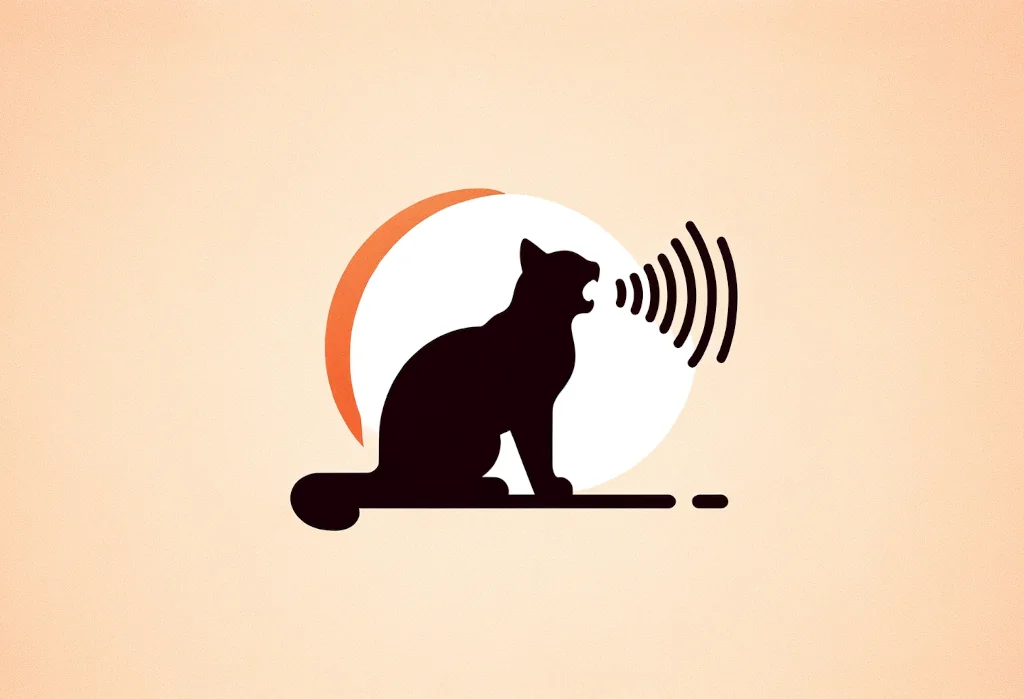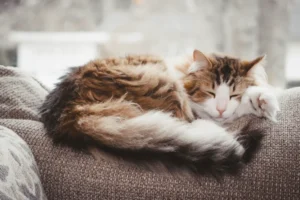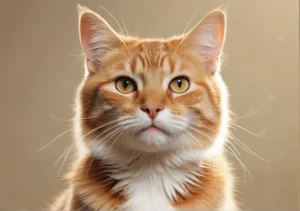
Nothing quite captures the essence of a disruptive night like your cat’s insistent meows piercing through the silence, especially when they are in heat. This post promises to shed light on why cats vocalize so much during their heat cycle, ensuring you understand your furry friend a bit better by the end.
Quick Takeaways:
- Increased meowing during a cat’s heat cycle is driven by hormonal changes and the natural urge to communicate with potential mates.
- Provide a calm environment, extra attention, and engage in play to help alleviate your cat’s discomfort during her heat cycle.
- Consider spaying to end the heat cycles, prevent health issues, and reduce unwanted vocalization.
Understanding the Heat Cycle in Cats
When it comes to understanding our feline friends, their heat cycle can seem like a bit of a mystery. Essentially, the heat cycle, or estrous cycle, is the period in which a female cat is fertile and receptive to mating. It’s a natural process that usually occurs every few weeks unless the cat becomes pregnant. During this time, you might notice a few telltale behaviors, such as increased vocalization, affectionate behavior, and, in some cases, restlessness or anxiety. These signs indicate your cat’s body is going through significant hormonal changes, preparing for the possibility of pregnancy.
Why Do Cats Meow When in Heat?
Let’s dive straight into the heart of our topic. Cats are known for being relatively vocal animals, but their meowing reaches new heights when they’re in heat. This increase in vocalization is primarily due to a surge in hormones. Specifically, estrogen plays a big role here, nudging your cat to signal potential mates.
But it’s not all about biology. There’s a deep-seated need for communication here. By meowing, yowling, or even howling, your cat is essentially sending out a call to nearby tomcats, advertising her availability for mating. It’s a cat’s way of saying, “Hey, I’m ready to mate, and I’m looking for a partner!”
Unique Insight for Our Readers : While most sources will talk about the hormonal and communicative aspects of meowing, something often overlooked is the role of environmental factors. For indoor cats, the frustration of not being able to access the outside world, where they can naturally respond to their instincts, can exacerbate the vocalization. Enhancing your indoor environment with stimulating toys, perches, and even safe outdoor enclosures can help mitigate some of this stress-induced meowing.
Is Excessive Meowing a Sign of Distress?
It’s natural to worry when your usually quiet kitty turns into a vocal powerhouse. While increased meowing during the heat is normal, the key is to recognize when it might be a sign of distress. First off, understand that some level of vocalization is to be expected and isn’t necessarily a sign of discomfort. However, there are a few red flags to watch out for:
- Continuous, non-stop meowing: While increased vocalization is normal, if your cat doesn’t seem to rest or is visibly agitated, it might be time to consult a vet.
- Changes in eating or bathroom habits: Stress or discomfort might also manifest in how your cat eats or uses the litter box.
- Aggression or withdrawal: Significant changes in behavior, such as sudden aggression or hiding for prolonged periods, can indicate that something more serious is at play.
Remember, while the heat cycle is a natural process, continuous signs of distress aren’t. If you’re ever in doubt, a check-up with your vet can offer peace of mind and ensure your furry friend stays healthy and happy.
As we continue to explore the fascinating world of our feline companions, it’s essential to approach their natural behaviors with empathy and understanding. Stay tuned for more insights into your cat’s health and happiness!
How Can You Help Your Cat Through Her Heat?
Seeing your feline friend in distress can tug at your heartstrings. If your cat is meowing incessantly due to being in heat, fret not! There are several ways you can help ease her discomfort and keep your sanity intact. First off, it’s important to understand that a cat in heat is riding a hormonal rollercoaster, so patience and tender care are key.
- Provide Extra Attention: Cats in heat often seek more affection. Offering your lap for extra cuddles or spending time playing can distract her from her discomfort.
- Keep Her Indoors: This not only prevents unwanted pregnancy but also keeps her safe from the dangers of wandering off.
- Create a Calm Environment: Soft bedding in a quiet room can offer a sanctuary from the chaos of hormones.
- Use Feline Pheromones: Products like Feliway mimic cat pheromones, creating a sense of comfort and security.
- Engage in Play: Use toys to help her burn off energy and alleviate stress. Think laser pointers or feather wands – interactive toys that stimulate her hunting instincts.
Unique Tip: Try creating a DIY Catnip Toy specific for this situation. Sew a small pillow and stuff it with catnip. The euphoria induced by catnip can offer temporary relief from her hormonal stress, providing a unique and safe distraction.
Now, it’s crucial to understand that while these tips can alleviate symptoms, they don’t address the root cause. If your cat seems in extreme distress, it’s wise to consult with your vet. They can offer additional advice or even medications to help ease her symptoms.
When Should You Consider Spaying Your Cat?
Spaying not only puts an end to the heat cycles but also contributes to a healthier life for your cat. It eliminates the risk of certain cancers and reduces the chance of your feline developing serious health issues later in life.
But when is the right time? The traditional advice is before their first heat, which can be as early as four months. However, this can vary depending on your cat’s health, breed, and lifestyle. A conversation with your vet can help pinpoint the best timing for your pet.
Spaying can significantly reduce, if not eliminate, vocalization related to the heat cycle. It’s a surefire way to ensure peace for both your cat and your family. Plus, it’s a responsible choice in preventing overpopulation and reducing the number of homeless cats.
Recognizing Other Reasons for Excessive Meowing
While a cat in heat will meow more than usual, it’s vital to recognize when meowing might signal something else. Excessive vocalization can be a cat’s way of expressing discomfort, confusion, or a sign of health issues.
- Hunger or Thirst: Ensure her food and water are fresh and accessible.
- Desire for Attention: Some cats are simply more vocal in seeking interaction.
- Health Concerns: Persistent meowing can indicate pain or discomfort. Especially in older cats, it’s a red flag for potential health problems.
- Sensory Decline: Confusion or anxiety due to decreased sight or hearing can increase vocalizations.
If your cat’s meowing patterns change suddenly or are accompanied by other symptoms like lethargy or loss of appetite, it’s time for a vet visit. Only a professional can rule out health issues and offer the right course of treatment.
In summary, while a cat in heat can be a vocal powerhouse, understanding and patience can go a long way. Providing comfort, considering spaying, and recognizing when meowing is a sign of something more serious are crucial steps in caring for your feline friend. Remember, when in doubt, your vet is your best ally in ensuring your cat’s health and happiness.
Alex, a passionate animal lover, has experience in training and understanding animal behavior. As a proud pet parent to two dogs and three cats, he founded AnimalReport.net to share insights from animal experts and expand his knowledge of the animal kingdom.




